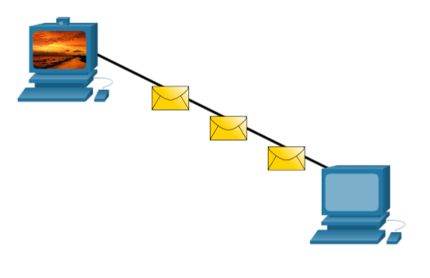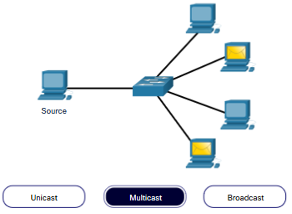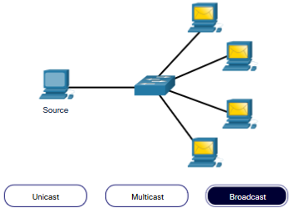
About Lesson
The Rules in Network Communications
Describe the types of rules that are necessary to successfully communicate.
Communications Fundamentals
Networks can vary in size and complexity. It is not enough to have a connection, devices must agree on “how” to communicate. There are three elements to any communication:
- There will be a source (sender).
- There will be a destination (receiver).
- There will be a channel (media) that provides for the path of communications to occur.
Communications Protocols
- All communications are governed by protocols. Protocols are the rules that communications will follow. These rules will vary depending on the protocol.

Rule Establishment
- Individuals must use established rules or agreements to govern the conversation.
- The first message is difficult to read because it is not formatted properly.

- The second shows the message properly formatted

Protocols must account for the following requirements:
- An identified sender and receiver
- Common language and grammar
- Speed and timing of delivery
- Confirmation or acknowledgment requirements
Network Protocol Requirements
Common computer protocols must be in agreement and include the following requirements:
- Message encoding
- Message formatting and encapsulation
- Message size
- Message timing
- Message delivery options
Message Encoding
- Encoding is the process of converting information into another acceptable form for transmission.

- Decoding reverses this process to interpret the information.

Message Formatting and Encapsulation
- When a message is sent, it must use a specific format or structure.

- Message formats depend on the type of message and the channel that is used to deliver the message.

Message Size
Encoding between hosts must be in an appropriate format for the medium.
- Messages sent across the network are converted to bits
- The bits are encoded into a pattern of light, sound, or electrical impulses.
- The destination host must decode the signals to interpret the message.

Message Timing
Message timing includes the following:
- Flow Control – Manages the rate of data transmission and defines how much information can be sent and the speed at which it can be delivered.
- Response Timeout – Manages how long a device waits when it does not hear a reply from the destination.
- Access method – Determines when someone can send a message.
- There may be various rules governing issues like “collisions”. This is when more than one device sends traffic at the same time and the messages become corrupt.
- Some protocols are proactive and attempt to prevent collisions; other protocols are reactive and establish a recovery method after the collision occurs.
Message Delivery Options
Message delivery may one of the following methods:
- Unicast – one to one communication

- Multicast – one to many, typically not all

- Broadcast – one to all

Other related topics
| Topic Title | Topic Objective |
|---|---|
| The Rules in Network Communications | Describe the types of rules that are necessary to successfully communicate. |
| Protocols | Explain why protocols are necessary in network communication. |
| Protocol Suites | Explain the purpose of adhering to a protocol suite. |
| Standards Organizations | Explain the role of standards organizations in establishing protocols for network interoperability. |
| Reference Models | Explain how the TCP/IP model and the OSI model are used to facilitate standardization in the communication process. |
| Data Encapsulation | Explain how data encapsulation allows data to be transported across the network. |
| Data Access | Explain how local hosts access local resources on a network. |
Other useful information
- Full CCNA Course
- CCNA Certificate Information
- 200-301 CCNA Exam Questions and Solutions
- 200-301 CCNA Exam Topics
Join the conversation